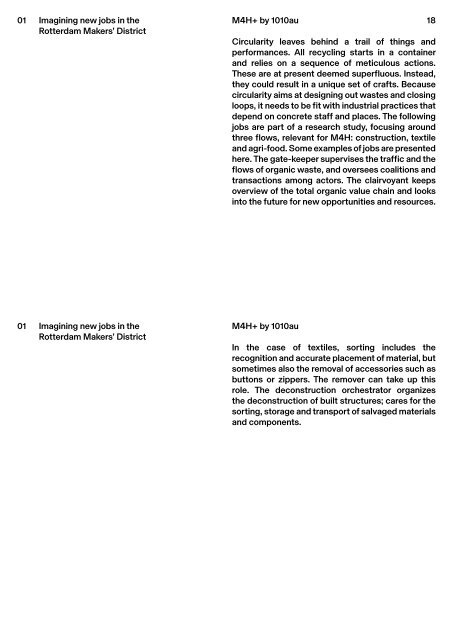Circular City Ports - Lessons Learned
Create successful ePaper yourself
Turn your PDF publications into a flip-book with our unique Google optimized e-Paper software.
01 Imagining new jobs in the<br />
Rotterdam Makers’ District<br />
M4H+ by 1010au<br />
18<br />
<strong>Circular</strong>ity leaves behind a trail of things and<br />
performances. All recycling starts in a container<br />
and relies on a sequence of meticulous actions.<br />
These are at present deemed superfluous. Instead,<br />
they could result in a unique set of crafts. Because<br />
circularity aims at designing out wastes and closing<br />
loops, it needs to be fit with industrial practices that<br />
depend on concrete staff and places. The following<br />
jobs are part of a research study, focusing around<br />
three flows, relevant for M4H: construction, textile<br />
and agri-food. Some examples of jobs are presented<br />
here. The gate-keeper supervises the traffic and the<br />
flows of organic waste, and oversees coalitions and<br />
transactions among actors. The clairvoyant keeps<br />
overview of the total organic value chain and looks<br />
into the future for new opportunities and resources.<br />
01 Imagining new jobs in the<br />
Rotterdam Makers’ District<br />
M4H+ by 1010au<br />
In the case of textiles, sorting includes the<br />
recognition and accurate placement of material, but<br />
sometimes also the removal of accessories such as<br />
buttons or zippers. The remover can take up this<br />
role. The deconstruction orchestrator organizes<br />
the deconstruction of built structures; cares for the<br />
sorting, storage and transport of salvaged materials<br />
and components.


















